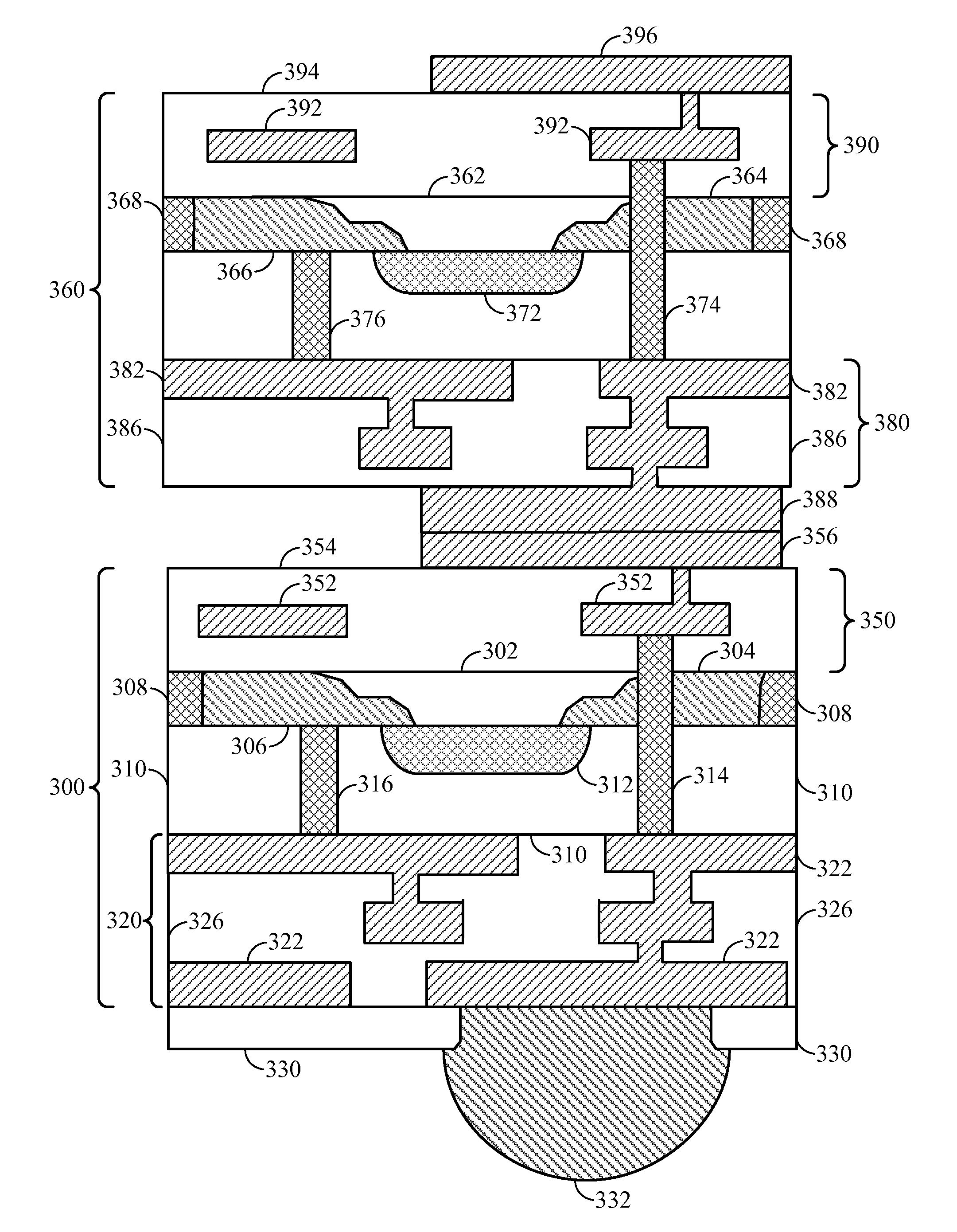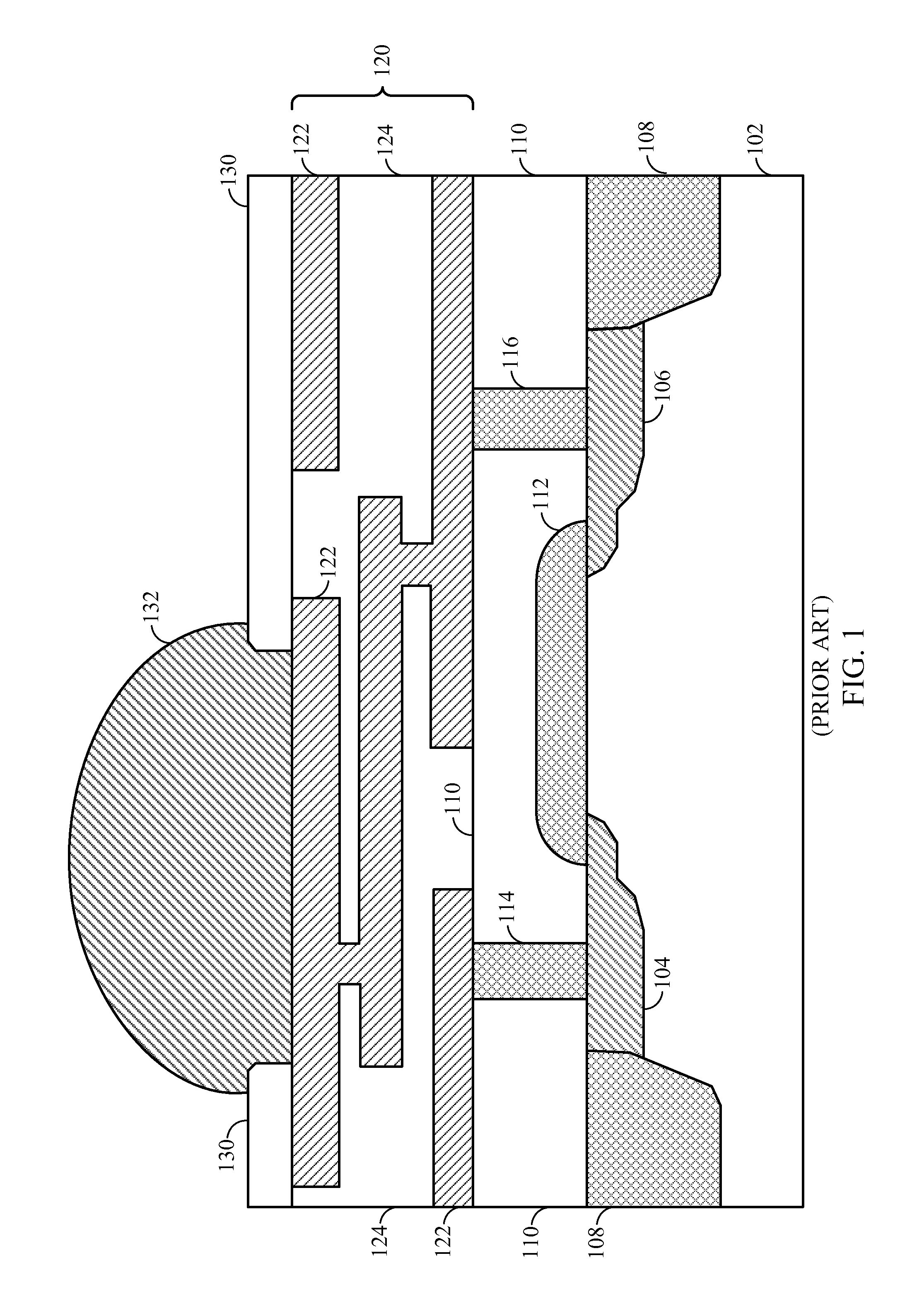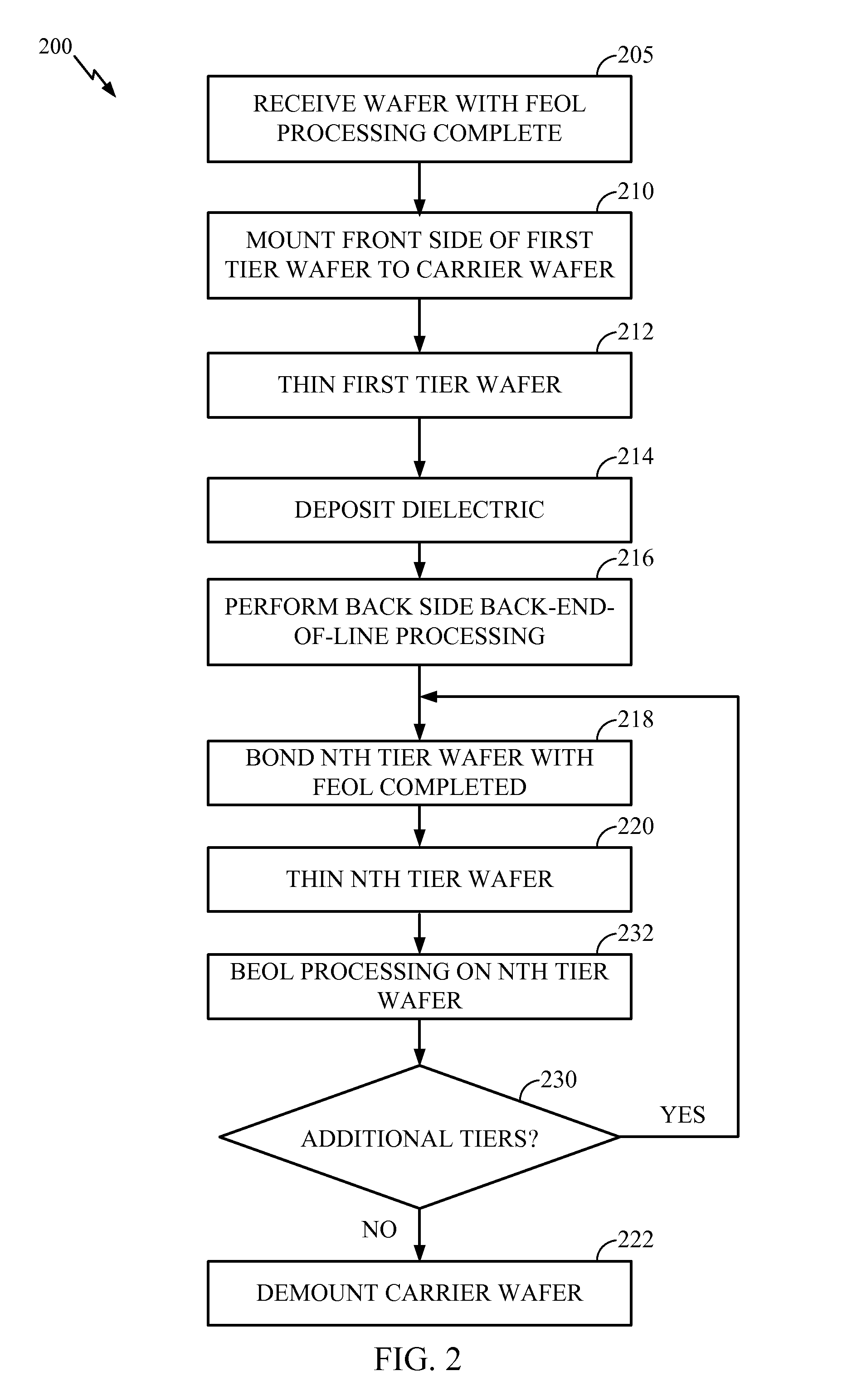Dual-side interconnected CMOS for stacked integrated circuits
a technology of integrated circuits and stacked circuits, applied in the field of integrated circuits, can solve the problems of limiting the height of stacked circuits, and ultra-thin cellular phones may not support stacked circuits having multiple dies
- Summary
- Abstract
- Description
- Claims
- Application Information
AI Technical Summary
Problems solved by technology
Method used
Image
Examples
Embodiment Construction
[0015]Reducing the height of stacked integrated circuits (ICs) may be accomplished with dual-side interconnected integrated circuits. According to one embodiment, a combination of regular contacts and extended contacts are etched in an integrated circuit. The regular contacts allow coupling to the front side of the integrated circuit, and the extended contacts allow coupling to the front side and back side of the integrated circuit. Dual-side integrated circuits allow construction of ultra-thin stacked integrated circuits. Additionally, very high density tier-to-tier connections in the stacked IC are made possible.
[0016]FIG. 1 is a cross-sectional view illustrating a conventional semiconductor die. A bulk semiconductor layer 102 such as silicon includes a source region 104 and a drain region 106. Trench isolation regions 108 isolate the regions 104, 106 from other regions in the bulk semiconductor layer 102. A gate structure 112 is formed between the regions 104, 106 and on the bulk...
PUM
 Login to View More
Login to View More Abstract
Description
Claims
Application Information
 Login to View More
Login to View More - R&D
- Intellectual Property
- Life Sciences
- Materials
- Tech Scout
- Unparalleled Data Quality
- Higher Quality Content
- 60% Fewer Hallucinations
Browse by: Latest US Patents, China's latest patents, Technical Efficacy Thesaurus, Application Domain, Technology Topic, Popular Technical Reports.
© 2025 PatSnap. All rights reserved.Legal|Privacy policy|Modern Slavery Act Transparency Statement|Sitemap|About US| Contact US: help@patsnap.com



